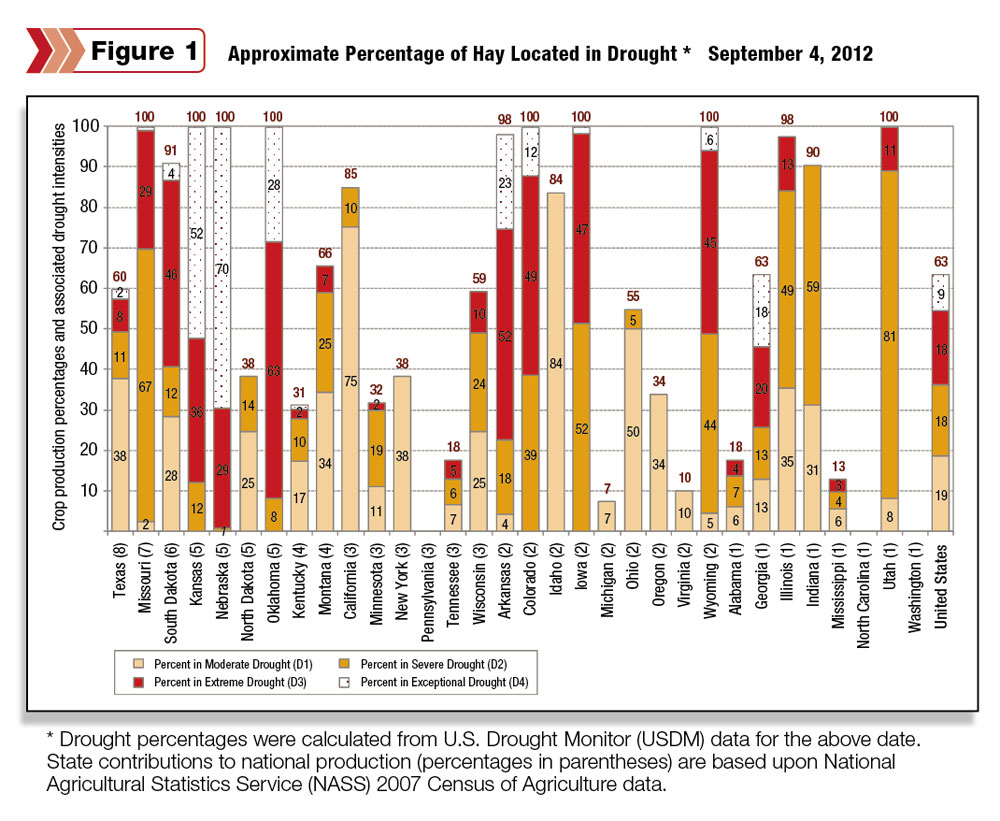As another forage production season comes to a close, many producers once again find themselves wondering if they will have enough feed on hand or be able to find and purchase what they are lacking.
The weather, always an unknown heading into a growing year, was not very kind in some areas, particularly in those that experienced drought.
Although some moisture fell during recent weeks, record-setting heat in the summer months caused severe stress to the nation’s croplands.
For example, according to the most recent USDA/NASS Crop Progress Report (week ending September 9, 2012), 59 percent of the nation’s pasture and range conditions are in the poor or very poor category compared to 42 percent a year ago.

And, according to the most recent USDA Agricultural Weather Assessments, 63 percent of the nation’s hay acres are growing under drought conditions (see Figure 1).
Click here or on the image at right to view it at full size in a new window.
Based on these figures, it’s almost inevitable that supplies may be limited and quality of the available forage may be lower than desired in the coming months.
The question looming is “Will there be adequate feed this year?”
As a producer, now is the time to assess your forage supply. Do you have enough to meet your own needs? If you are lucky enough to answer “yes” to that question, do you have enough to sell? How much should you charge?
Whether for your own use or excess to sell, it is critical to protect what supplies you do have to maximize quality.
Stack and cover hay to reduce weather damage, wrap or pack silage correctly to reduce loss and pay attention to pasture stocking density and rotation.
Soil and forage testing should also be a high priority, not only to know what you have to work with for this year but also to plan for next season. Keep good records, and prioritize your feed needs.
As always, communication is critical. If you are in need of forage, network with others to find available resources. If money is an issue, talk to your buyer or seller up front and come to an agreement you can both live with.
Ultimately it’s “business as usual” in the forage world, but if we all work together, there will hopefully be enough to go around.









